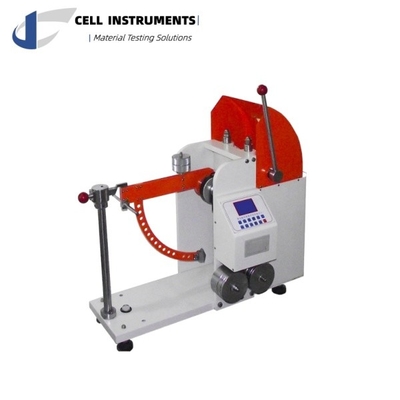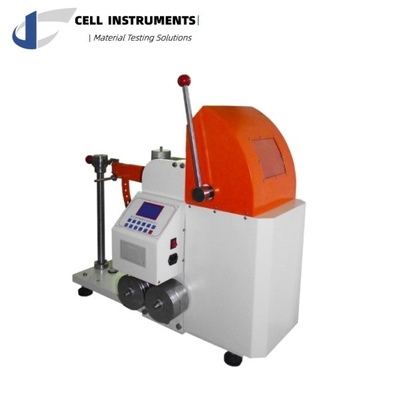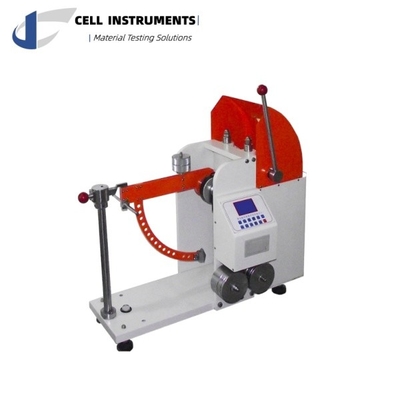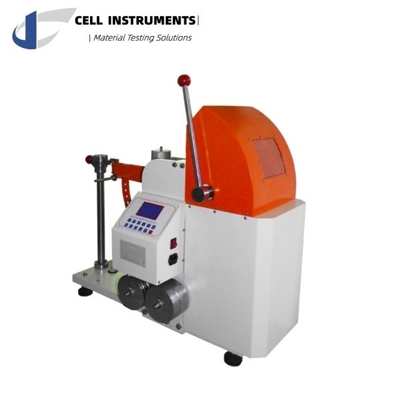Paper And Cardboard Puncture Resistance Tester ISO 3036 Tester For Lab Use Corrugated Puncture Tester

Contact me for free samples and coupons.
WhatsApp:0086 18588475571
Wechat: 0086 18588475571
Skype: sales10@aixton.com
If you have any concern, we provide 24-hour online help.
x| Test Range | (1~48) J | Four Gears | A <6J; B<12J; C<24J; D<48J |
|---|---|---|---|
| Resolution | 0.001J | Sample Size | 175*175mm |
| Pressure Head | (100±2) Kpa | Friction Sleeve Resistance | <0.25J |
| Pyramidal Head | Edge Length 60mm×60mm×60mm Height 25±0.7mm | Dimension | 900*410*800mm |
| Power | AC 220V 50Hz | Weight | 110kg |
Paper And Cardboard Puncture Resistance Tester ISO 3036 Tester For Lab Use Corrugated Puncture Tester
| PST-01 | |
| Test Range | (1~48) J |
| Four Gears | A <6J; B<12J; C<24J; D<48J |
| Resolution | 0.001J |
| Sample Size | 175*175mm |
| Pressure Head | (100±2) Kpa |
| Friction Sleeve Resistance | <0.25J |
| Pyramidal Head | Edge Length 60mm×60mm×60mm Height 25±0.7mm |
| Dimension | 900*410*800mm |
| Power | AC 220V 50Hz |
| Weight | 110kg |
![]()
![]()
Paper and Cardboard Puncture Resistance Tester – PST-01 Puncture Strength Tester
The Paper and Cardboard Puncture Resistance Tester, model PST-01, is an advanced instrument designed for testing the puncture resistance of paper, cardboard, corrugated board, and container board. With precise functionality, it measures the energy required to puncture materials with a stainless steel pyramidal point affixed to a pendulum arm. This makes it an essential tool in industries like packaging, paper production, and quality control laboratories.
This high-precision Paper and Cardboard Puncture Resistance Tester is crucial for manufacturers aiming to ensure their materials meet strict industry standards and regulations, including ISO 3036, TAPPI T803, DIN 53142, GB/T 2679, QB/T 1664, and SN T0262.
Product Overview
The PST-01 Paper and Cardboard Puncture Resistance Tester is engineered for laboratory use, offering an intuitive design that delivers highly accurate measurements of puncture resistance. The device operates by driving a pyramidal puncture head through the test specimen. The tester is used to evaluate the energy needed to penetrate and tear the material, which is expressed in "puncture units"—a combination of the energy to tear the material and the energy to bend it out of the puncture point's path.
Designed to meet the rigorous demands of modern packaging, food, and industrial materials testing, the Paper and Cardboard Puncture Resistance Tester helps businesses maintain high-quality production standards by identifying potential weak points in paper and cardboard products.
Working Principle of the Paper and Cardboard Puncture Resistance Tester
The PST-01 works by using a puncture head made from stainless steel, which takes the form of a right-angled triangular pyramid. This puncture head is attached to a solid pendulum arm, which swings through an arc when released. The pendulum arm is designed to minimize vibration and deformation during the test, ensuring precise results.
The test specimen is clamped between two horizontal plates, with a triangular hole in each plate to allow the puncture head to pass through. Once the pendulum swings, the puncture head penetrates the specimen, with the energy required to do so measured and reported. This makes the Paper and Cardboard Puncture Resistance Tester essential for determining the durability and structural integrity of packaging materials.
Key Features of the PST-01 Paper and Cardboard Puncture Resistance Tester
-
LCD Display and PVC Menu Type Operation Panel
The device features a user-friendly LCD screen for easy navigation and control, offering clear, real-time data visualization. -
Microcomputer Control with Data Statistics, Storage, and Printing Function
The Paper and Cardboard Puncture Resistance Tester is equipped with a microcomputer control system that allows for automatic data collection, analysis, and storage. Users can also print results for better documentation and reporting. -
Auto Measuring and Intelligent Judgment System
With its automatic measuring capabilities, the tester delivers precise puncture resistance measurements. The intelligent judgment system helps identify material weaknesses and provides immediate feedback. -
Adjustable Gears for Different Test Ranges
The device supports four adjustable test ranges, allowing for flexibility in testing materials of varying strengths. -
Sturdy Design and Reliable Performance
Built with a robust protective design, the Paper and Cardboard Puncture Resistance Tester ensures consistent performance and durability, even with frequent use in laboratory environments.
Testing Standards
This Paper and Cardboard Puncture Resistance Tester complies with international testing standards, ensuring the results it provides are accepted across multiple industries. It meets the following standards:
- ISO 3036
- TAPPI T803
- DIN 53142
- GB/T 2679
- QB/T 1664
- SN T0262
These standards make it a trusted solution for evaluating the puncture resistance of materials, particularly in industries such as packaging, food production, and pharmaceuticals, where product protection is paramount.
Technical Specifications
| Parameter | Details |
|---|---|
| Test Range | 1~48 J |
| Gears | A <6J; B <12J; C <24J; D <48J |
| Resolution | 0.001 J |
| Sample Size | 175 mm × 175 mm |
| Pressure Head | 100 ± 2 kPa |
| Friction Sleeve Resistance | <0.25 J |
| Pyramidal Head Dimensions | Edge Length: 60 mm × 60 mm × 60 mm, Height: 25 ± 0.7 mm |
| Power Supply | AC 220V 50Hz |
| Dimensions | 900 mm × 410 mm × 800 mm |
| Weight | 110 kg |
Benefits of Using a Paper and Cardboard Puncture Resistance Tester
-
Enhance Material Quality Control
The Paper and Cardboard Puncture Resistance Tester ensures packaging materials meet required strength and durability standards, preventing product damage during transportation. -
Cost Savings
Identifying weak points in packaging materials early helps reduce costly product returns, damages, and waste. By testing the puncture resistance of materials before production, businesses can make informed decisions on material selection. -
Compliance with International Standards
With testing capabilities that comply with ISO 3036 and other global standards, the Paper and Cardboard Puncture Resistance Tester guarantees your packaging meets international quality benchmarks. -
Wide Application Across Industries
This tester is vital for industries such as packaging, food, pharmaceuticals, and more, where material strength plays a crucial role in ensuring product safety.
Frequently Asked Questions (FAQ)
Q1: What types of materials can the Paper and Cardboard Puncture Resistance Tester test?
A1: This tester is designed for paper, cardboard, corrugated board, and container board. It measures the puncture resistance required to assess material durability in packaging and related industries.
Q2: How does the puncture resistance tester ensure accurate results?
A2: The puncture tester uses a pendulum arm with minimal vibration and deformation, ensuring that the energy required to puncture the material is measured precisely.
Q3: What is the significance of compliance with ISO 3036 in puncture resistance testing?
A3: ISO 3036 sets international standards for measuring puncture resistance, ensuring that tested materials meet the durability requirements for safe and reliable packaging.
Q4: What are the test ranges offered by the Paper and Cardboard Puncture Resistance Tester?
A4: The tester provides four gears for different test ranges: A <6J, B <12J, C <24J, and D <48J, making it versatile for various material strengths.
Q5: Can the test results be stored and printed?
A5: Yes, the tester features microcomputer control with data storage and printing functions, allowing users to save and print test results for easy documentation.






